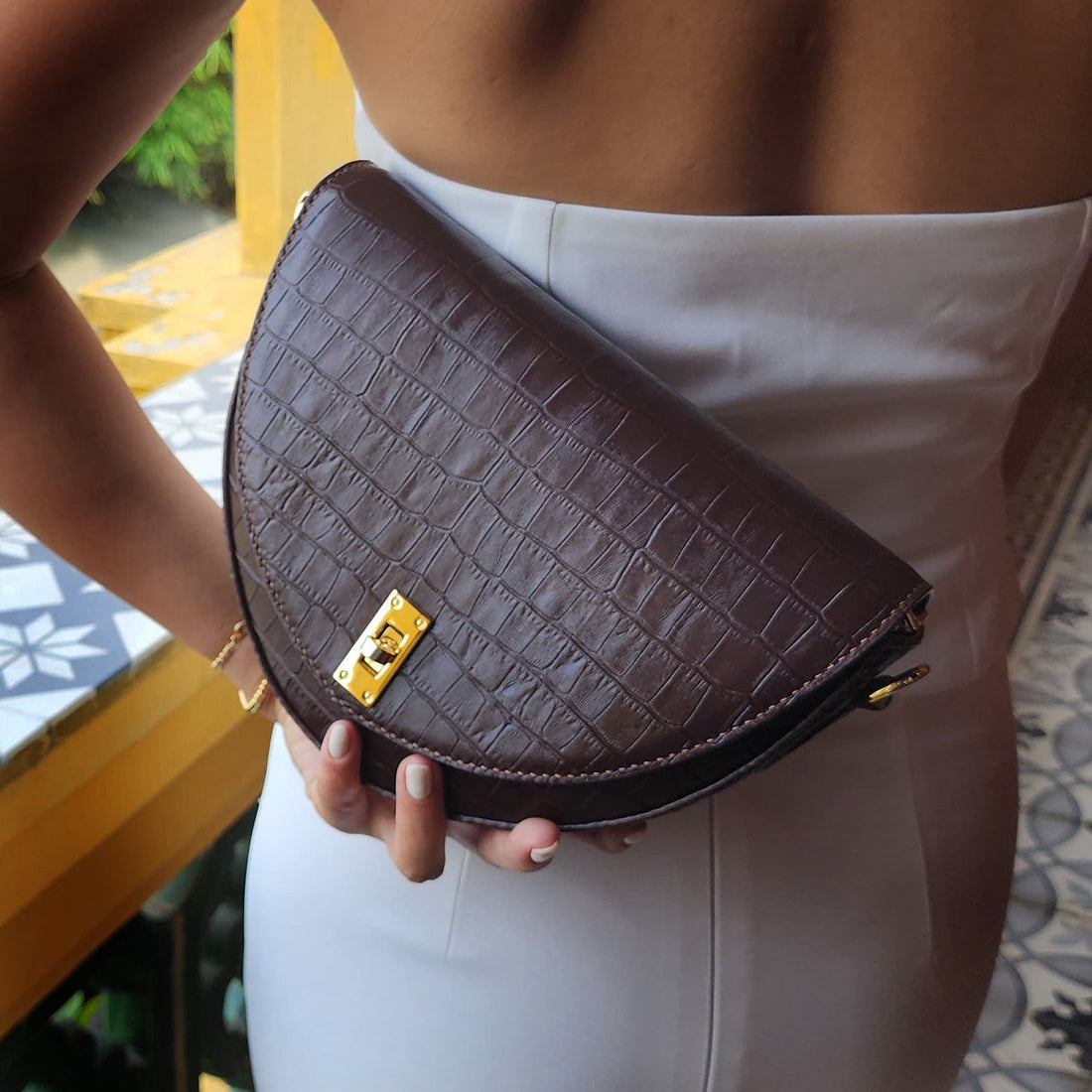The simplest reason we need handbags is utility. Few garments have enough pockets to hold everything we need in a day. A handbag gives us the freedom to keep essentials close without sacrificing comfort or style. From a functional perspective, a bag is a mobile storage solution, one that evolves as our lifestyles change.
And it’s not a new idea. Humans have carried bags for thousands of years. One of the earliest known examples belonged to Ötzi the Iceman, who lived over 5,000 years ago and carried a leather pouch for tools and supplies. In ancient Egypt, people used leather bags with straps to hold everyday essentials as early as 2686 BC.
They Express Who We Are
A handbag is also a form of self-expression. Minimalist crossbody, structured tote, playful clutch, each choice quietly communicates something about our taste and priorities. Even when we don’t consciously think about it, the bag we carry often signals aspects of our personality, mood, and sense of style.
This connection between bags and identity goes back centuries. In the early 1300s, a noblewoman in the Middle East carried what is now believed to be the world’s oldest surviving handbag: the Courtauld Bag, crafted with intricate inlays to display wealth and status. By the late 1700s in Europe, women’s fashions shifted toward slimmer silhouettes inspired by ancient Greece and Rome, giving rise to delicate reticules, small drawstring purses made of silk and velvet, designed to complement elegant dresses without adding bulk.
They Reflect Culture and Craft
Handbags carry cultural meaning. In many places, they symbolize status, craftsmanship, and tradition. The materials, construction, and design can tell a story, sometimes of heritage, sometimes of innovation.
During the Industrial Revolution, the modern luxury handbag emerged almost by accident. In 1841, English entrepreneur Samuel Parkinson ordered a set of durable leather travel cases and insisted on a sturdier bag for his wife after noticing her delicate fabric purse wasn’t suitable for long journeys by train. The result was the first coordinated set of leather handbags designed to match her luggage, precursors to the high-end pieces we recognize today.
Even the language we use to describe bags evolved along with their role. The word handbag first appeared in the early 1900s, initially referring to men’s hand luggage, before it came to describe the larger, more structured accessories women carried. Meanwhile, terms like pocketbook and purse continued to shift in meaning across cultures and decades.
They Are Part of Ritual
For many people, reaching for a handbag marks the moment of stepping into the world. It’s a small ritual: packing your things, checking that everything is there, closing the clasp. It signals that you’re ready to go.
This ritual has occasionally drawn unexpected interpretations. In the early 20th century, Sigmund Freud claimed that handbags were sexually suggestive, arguing that the act of retrieving personal items in public symbolized a woman’s sexuality, an idea reflecting the anxieties of the time more than the reality of daily life.
Over the decades, handbags have been both criticized and celebrated. In the 1940s, wartime shortages inspired creative alternatives like raffia totes and crocheted purses. In the 1980s, Britain’s Prime Minister Margaret Thatcher made her structured handbag famous enough to inspire the verb to handbag, meaning to dominate or admonish an opponent with determination.
Even Queen Elizabeth II was known to have owned over 200 Launer London bags, each carefully chosen to accompany her through decades of public life.
We Don’t Know Why You Need a Handbag, But We Know Why We Make Them
We can’t claim to know exactly why you reach for a handbag each day, maybe it’s for practicality, maybe it’s a small act of self-expression, or maybe it’s simply habit. But we do know why we make them. We make handbags to honor craftsmanship, to celebrate beautiful materials, and to create something that feels personal in a world of disposable things. We make them so that, whatever your reason, you have a piece that’s built to last and worthy of carrying the story you want to tell.

